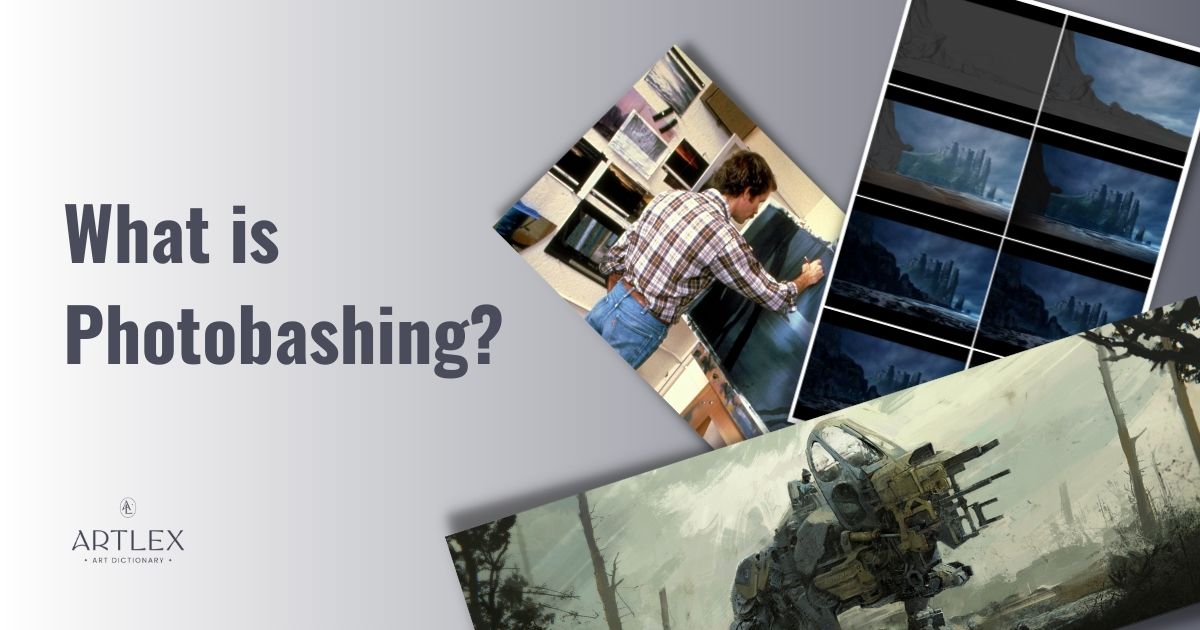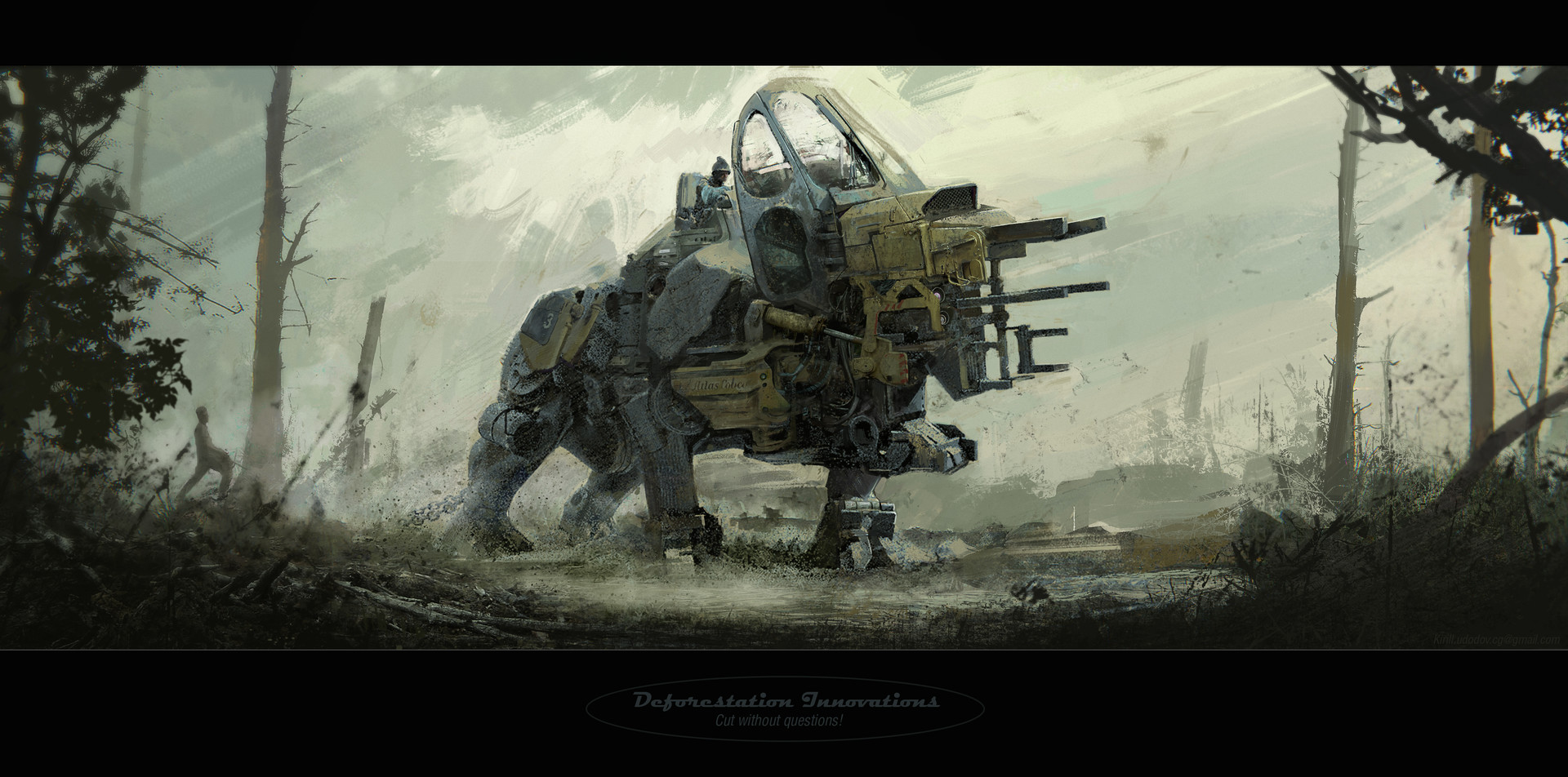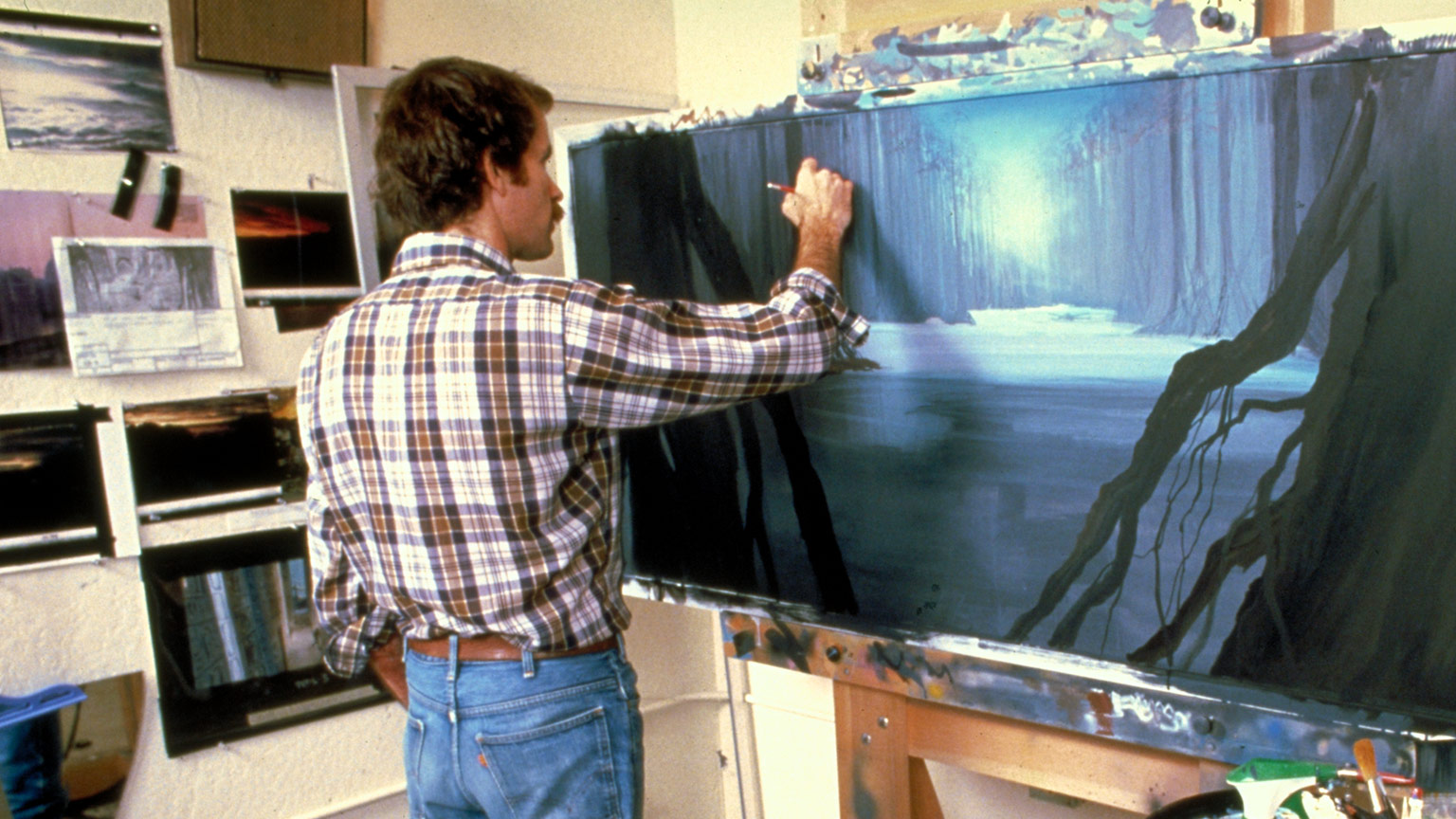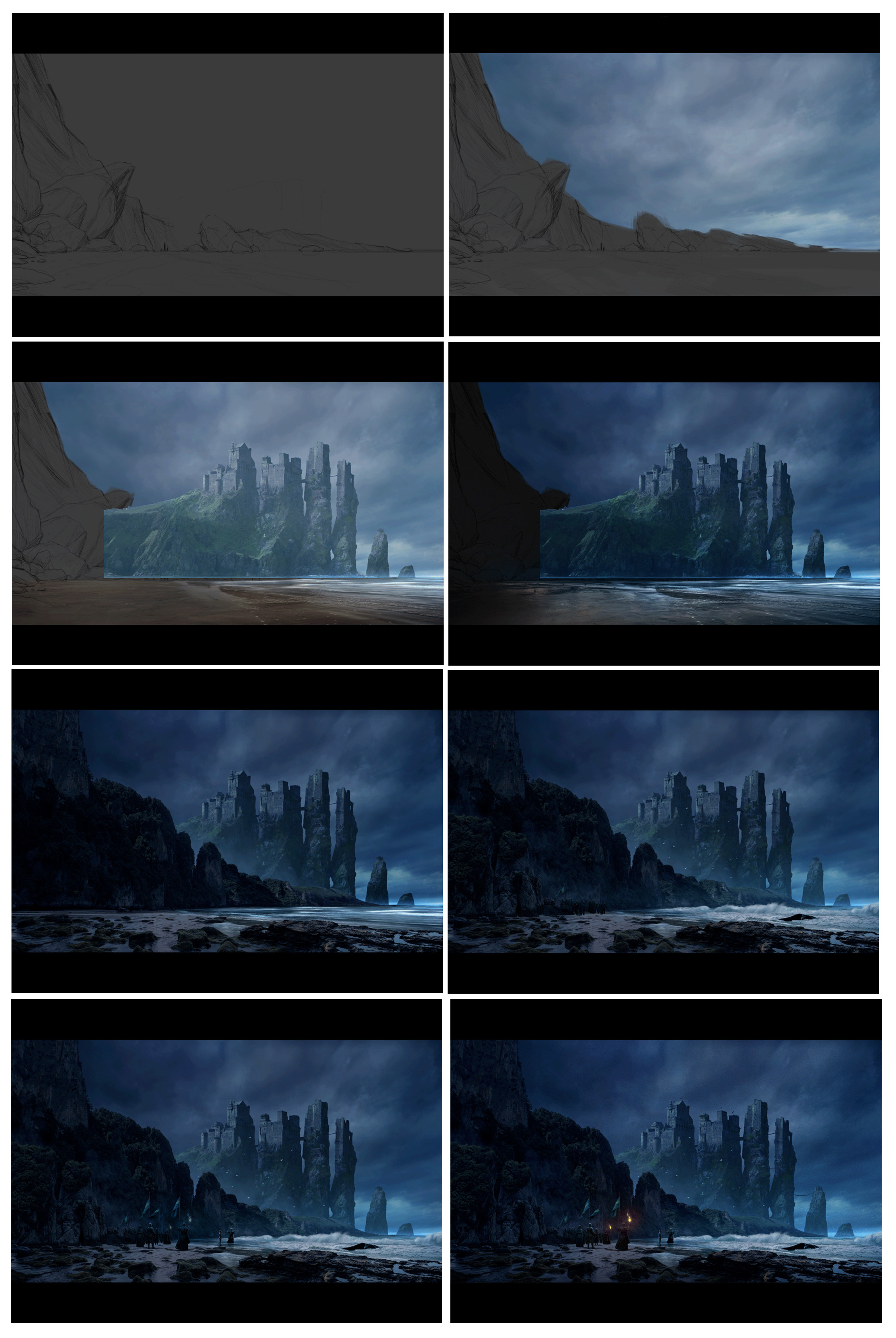

What is Photobashing?
Photobashing is a technique that consists of using multiple digital assets like pictures, textures, and 3D models to create realistic-looking artwork. What sets photobashing apart from a photo-manipulation is that when photo editing, the final purpose is to enhance the photo, and when photobashing the purpose is to enhance our artwork by bashing the photo textures and digital assets.
When photobashing we don’t just edit an image but make a collage of digital images and blend them into each other using layer blending modes, color correction effects, and filters to obtain a cohesive and visually appealing art piece.
Photobashing is mostly used in concept art and video game art, however, due to its popularity and short production time, we can now find it on movies, book covers, posters, graphic design, and even NFT art.
- Definition of Photobashing
- A digital art technique that blends multiple digital assets (e.g., photos, textures, 3D renders) to create realistic-looking artwork.
- Unlike photo manipulation, where the goal is to enhance a photo, photobashing enhances an artwork by integrating external photo elements.
- Primary Use Cases
- Concept Art and Video Games: Commonly used to create rapid and realistic designs for environments and characters.
- Found in movies, book covers, posters, graphic design, and NFT art due to its speed and efficiency.
- Origins and Evolution
- Rooted in matte painting, a traditional film technique where artists painted on glass for special effects in live footage.
- With the rise of computer graphics, digital artists adopted photobashing to speed up production and achieve realism using tools like Photoshop and online image libraries.
- Difference from Matte Painting
- Photobashing: Relies heavily on collaging and editing photos or 3D renders, with minimal painting. Primarily a technique.
- Matte Painting: Involves skilled illustration and is often the final product integrated into film or game production.
- The Photobashing Process
- Starts with a rough sketch that establishes perspective and composition.
- Artists collect digital resources (e.g., backgrounds, textures, objects) and layer them using blending modes, color correction, and lighting adjustments.
- Best performed using Photoshop for its advanced tools; budget-friendly alternatives include Krita, Clip Studio Paint, and GIMP.
- Copyright Concerns
- Artists must ensure the resources they use are free to use or properly licensed (e.g., public domain or Creative Commons).
- Stock websites often provide clear licensing information, but artists must avoid unauthorized use to respect copyright laws.
- Challenges and Recommendations
- Not ideal for beginners as it requires solid knowledge of fundamentals such as perspective, lighting, color harmony, and composition.
- Beginners risk neglecting foundational skills by relying on edited assets instead of building a strong artistic base.
Conclusion
Photobashing is a powerful and efficient digital art technique ideal for creating realistic artwork in concept art, video games, and other creative projects. However, it demands strong artistic fundamentals and careful use of licensed assets to ensure professional and ethical results. Beginners are encouraged to focus on traditional skills before integrating photobashing into their workflows.
The Origins of Photobashing
Photobashing is a relatively new technique, that had its origins in matte-painting, a traditional technique used in film production when computer graphics were not as popular as today and where artists were needed to create a landscape or prop paintings on glass that could be layered either behind or in front of the live footage for special shots, somehow overcoming some of the limitations of location, budget, and technology.
With the integration of computer graphics and the dire need for quick but convincing-looking concept art, digital artists started using photo manipulation and photo editing to enhance their artworks and speed up their working process, and with the ever-growing galleries of pictures that the internet provided, and the flexibility that digital painting software offered, photobashing ended up being the ultimate technique for realistic concept art.
Photobashing vs Matte Painting

The main difference between photobashing and matte painting is that photobashing relies on collaging and editing photos and 2D renders of 3D assets to obtain the desired result, with a minimum or sometimes even nonexistent use of painting, since the main objective is to achieve a realistic final piece in contrast to matte painting, where illustration skills are needed to sometimes recreate landscapes and props that will be lately integrated to the production process.
Photobashing can be used as a technique for matte painting since the expected result is a highly realistic piece, however, matte painting is an end product, and photobashing is only a technique that can be used for early concept art pieces as well as part of a finished piece.
Process of Photobashing

The photobashing technique has a more or less established process, an initial rough sketch or concept piece is needed, where the perspective of the piece is set by the artist, followed by the collection of digital resources that fit within that perspective, starting by the background, which will set the mood and color scheme of the piece, followed by objects on the foreground and midground, which need to be color adjusted and retouched to match the lights, shadows, and perspective of the piece.
The best software for photobashing is Photoshop, though there are several digital painting and photo manipulation software in the market, Photoshop takes the lead with its advanced AI photo editing tools, filters, and smart objects, making the process much more quick and easy than other software that only relies on color correction and blending layer modes.
But Photoshop is quite pricey, so as some budget-friendly alternatives, we have Krita, Clip Studio Paint, and Gimp, where though the photo editing tools are not as advanced, there are plenty of resources, brushes, and textures that can contribute to the creating process.
If you’re starting on digital art or want to learn more about the digital painting software that can be used for photobashing, this article has everything you need to know.
“How To Start Drawing Digital Art — A Complete Guide For Beginners”
Photobashing and Copyright Concerns
Photobashing is an extremely convenient technique that can guarantee quick high-quality results, however, there are a few things photobashing artists (and any artist that uses photo manipulation in general) need to be extremely careful about, and that is the digital resources they use.
There are many pictures and 3D assets that are free to use, however, there are also pictures that are under a license, whether the license requires attribution or has a set price, we can’t simply grab any image from the internet and use it in our work without taking into consideration the original author and the license said image is under.
It is not hard to know whether an image is under a license, most stock websites have well-stated licenses for their images and even watermarks to prevent the use, and in some cases, even the free sites have limited use license that requires either attribution or use for derivative work only, so it’s better to be informed about types of licenses and public domain stock sites.
In this article, you’ll be able to find free reference image websites that contain public domain images as well as images under a creative commons license that allows you to use them with or without attribution.
Final Notes – Know Your Fundamentals
Photobashing is an amazing technique, and it’s extremely useful, especially when working under a tight deadline, however, it is not a technique recommended for beginners.
Photobashing does require a lot of knowledge in perspective, color harmony, composition, lighting as well as design and value, however, if you’re a beginner artist it becomes easier to use digital assets instead of reinforcing the fundamentals every artist should be well trained on.
And without those fundamentals, every piece you use photobashing in won’t look as good as if you were properly trained on perspective and composition.
Photobashing is a double-edged sword, especially for those who just started learning. It is very easy to get lost in the illusion that well-edited professional pictures provide to the eye and end up neglecting your artistic formation, so as long as you don’t have a strong fundamental base of knowledge, try to avoid Photobashing.
